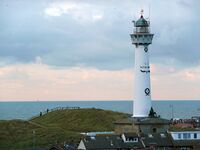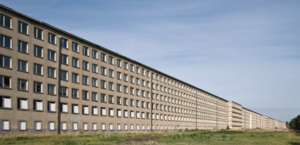Geelesant: Difference between revisions
mNo edit summary |
m (forgot the infobox) |
||
| Line 1: | Line 1: | ||
{{Infobox settlement | |||
| name = Yellow Sands | |||
| native_name = Geelesant | |||
| native_name_lang = <!-- ISO 639-2 code e.g. "fr" for French. If more than one, use {{lang}} instead --> | |||
| settlement_type = Town | |||
| image_skyline = [[File:Geelesant.jpg|200px]] | |||
| image_alt = | |||
| image_caption = | |||
| image_flag = | |||
| flag_alt = | |||
| image_seal = | |||
| seal_alt = | |||
| image_shield = | |||
| shield_alt = | |||
| etymology = | |||
| nickname = | |||
| motto = Beste strant fan het lant! <br /> ''Best beach of the country!'' | |||
| image_map = | |||
| map_alt = | |||
| map_caption = | |||
| subdivision_type = Country | |||
| subdivision_name = [[Variota]] | |||
| subdivision_type1 = Province | |||
| subdivision_name1 = [[Suit Reegenplaats]] | |||
| subdivision_type2 = Municipality | |||
| subdivision_name2 = Groenbos | |||
| subdivision_type3 = | |||
| subdivision_name3 = | |||
| established_title = Area bought by [[Frei fan het Huisselant]] | |||
| established_date = 1923 | |||
| founder = [[Wiktor Walensa]] | |||
| seat_type = | |||
| seat = | |||
| government_footnotes = | |||
| leader_party = [[Kaltoer Partij]] | |||
| leader_title = Mayor | |||
| leader_name = Anita Ferrelant | |||
| unit_pref = Metric | |||
<!-- ALL fields with measurements have automatic unit conversion --> | |||
<!-- for references: use <ref> tags --> | |||
| area_footnotes = | |||
| area_urban_footnotes = <!-- <ref> </ref> --> | |||
| area_rural_footnotes = <!-- <ref> </ref> --> | |||
| area_metro_footnotes = <!-- <ref> </ref> --> | |||
| area_magnitude = <!-- <ref> </ref> --> | |||
| area_note = | |||
| area_water_percent = | |||
| area_rank = | |||
| area_blank1_title = | |||
| area_blank2_title = | |||
<!-- square kilometers --> | |||
| area_total_km2 = | |||
| area_land_km2 = | |||
| area_water_km2 = | |||
| area_urban_km2 = | |||
| area_rural_km2 = | |||
| area_metro_km2 = | |||
| area_blank1_km2 = | |||
| area_blank2_km2 = | |||
<!-- hectares --> | |||
| area_total_ha = | |||
| area_land_ha = | |||
| area_water_ha = | |||
| area_urban_ha = | |||
| area_rural_ha = | |||
| area_metro_ha = | |||
| area_blank1_ha = | |||
| area_blank2_ha = | |||
| length_km = | |||
| width_km = | |||
| dimensions_footnotes = | |||
| elevation_footnotes = | |||
| elevation_m = | |||
| population_as_of = 2017 | |||
| population_footnotes = | |||
| population_total = 12,054 | |||
| population_density_km2 = auto | |||
| population_note = | |||
| population_demonym = | |||
| timezone1 = | |||
| utc_offset1 = | |||
| timezone1_DST = | |||
| utc_offset1_DST = | |||
| postal_code_type = | |||
| postal_code = | |||
| area_code_type = | |||
| area_code = | |||
| iso_code = | |||
| website = www.geelesant.vr | |||
| footnotes = | |||
}} | |||
'''Geelesant''', occasionally referred to in English as '''Yellow Sands''', is a village on the [[Adlantic Ocean]] coast in the [[Variota]]n province of [[Suid Reegenplaats]]. It is a part of the municipality of [[Groenbos]]. | '''Geelesant''', occasionally referred to in English as '''Yellow Sands''', is a village on the [[Adlantic Ocean]] coast in the [[Variota]]n province of [[Suid Reegenplaats]]. It is a part of the municipality of [[Groenbos]]. | ||
Latest revision as of 20:02, 15 September 2022
Yellow Sands
Geelesant | |
|---|---|
Town | |
 | |
| Motto(s): Beste strant fan het lant! Best beach of the country! | |
| Country | Variota |
| Province | Suit Reegenplaats |
| Municipality | Groenbos |
| Area bought by Frei fan het Huisselant | 1923 |
| Founded by | Wiktor Walensa |
| Government | |
| • Mayor | Anita Ferrelant (Kaltoer Partij) |
| Population (2017) | |
| • Total | 12,054 |
| Website | www.geelesant.vr |
Geelesant, occasionally referred to in English as Yellow Sands, is a village on the Adlantic Ocean coast in the Variotan province of Suid Reegenplaats. It is a part of the municipality of Groenbos.
Geelesant was a separate municipality until 1962, after tourism in the town died down and its population had shrunk to a mere 5000 inhabitants. Since 1962, it has been part of the municipality of Groenbos, the namesake of which lies five kilometres to the west of Geelesant. In 1983, a branch campus of the University of Finfishafen dealing with hospitality and oceanographic programs was established in Geelesant.
History
Geelesant was founded in 1923, when it was bought by the leisure organisation Frei fan het Huisselant. While the area had been known to have been used by Variotan smugglers in the 16th and 17th century, it had never been permanently inhabited, in spite of its pristine yellow beaches.
Between 1923 and 1925, when the first tourists arrived, the area was rapidly developed into a modern beach resort town capable of accommodating five-thousand tourists at a time. Amenities at that time included a cinema, a theatre, a large dock for passenger ships and sport facilities including tennis courts, football fields and a large outdoor pool used for water polo.
Due to its popularity among Variotan citizens, the town rapidly grew with restaurants, bars and casinos opening up throughout the years. Between 1925 and 1930, the amount of permanent residents grew from a mere five-hundred inhabitants to more than five-thousand and the amount of accommodation capacity grew from a capacity of five-thousand to twelve-thousand tourists, many of which enjoyed (partial) sea views from their rooms.
From 1930 to 1949, cruises organised by Frei fan het Huisselant departed from Geelesant to destinations in the Keelpijp passage. Those that could afford to do so would generally fit a small holiday in Geelesant in before or after the cruise.
The lighthouse, originally called the Wiktor Walensa Lighthouse but renamed in 1952 to the Geelesant Lighthouse, was built in 1933 to celebrate the 15th anniversary of the founding of the far-right Sons of the Variotan Motherland party, which Frei fan het Huisselant belonged to. The sea near Geelesant is particularly tranquil and does not require a lighthouse, it was purely built for cosmetic and sightseeing purposes, although it technically remains operational up to this day.
Between 1928 and 1983, the Variotan Coast Guard maintained a base in Geelesant, the Kustwagtbasis Geelesant, from which search and rescue operations were sent out among others. Variotan author Peter Tillebaart served there between 1945 and 1950 and wrote a book about some of the more memorable operations called Geelesant, Rooie See (Yellow Sands, Red Sea). The book became popular in Variota in the late 1950s and saw various translations and international editions in the early to mid 1960s.
After the 1949 ban on the Sons of the Variotan Motherland party and the folding of the Frei fan het Huisselant organisation into VarioToerist, the town and tourism declined. With the government attempting to stay away from any association with Wiktor Walensa and his Sons of the Variotan Motherland, even in passing, many of the accommodations saw only minimal upkeep and VarioToerist was ordered to limit its operations in, to and from the town, which was seen as somewhat tainted due to its history.
While the town still saw some tourism until 1955, when the last hotel closed its doors, it never reached an amount of visitors even close to its previous levels and without tourism to validate the expenses needed to keep up facilities such as the theater, the outdoor pool and many of the other sports facilities, the town seemed destined to become and remain a shadow of its former self.
The town's primary income shifted from tourism to fishing, with its large passenger dock being re-purposed to aid in this endeavour. Another minor income was the cinema, which was able to stay open due to the fact that it was the only one in the surrounding area. The Coast Guard base remained operational, even if the loss of tourism had removed the need of one in the area, as the local government was afraid that closing the base would be the start of a domino effect leading to the town being completely deserted.

The rise of Neo-Walensians in the 1970s led to a resurgence of tourism to the area and the original hotel blocks from 1925, by then derelict for more than fifteen years, were renovated by Dries Rolfink and the Rolfink Hotels corporation. The original capacity of five-thousand tourists was down-scaled to two-thousand five hundred as rooms were doubled in size. The shared bathrooms remained, but updated and modernized under the guise of it giving an authentic experience.
Between 1973 and 1983, during which Rolfink Hotels operated their Rolfink Resort Geelesant, the town regained some of its reputation of old and became popular among domestic and international tourists. A small community theater opened, the local fishers earned more as seafood restaurants catered to the tourists and the large dock was again re-purposed, this time to serve both fishing boats and passenger ships, among others. The mild sea and yellow beaches became popular again and have remained so since then, even if Geelesant remains one of the smaller beach resort towns of Variota to this day. Seeing the limitations of the hotel blocks and a customer base that wanted more luxury and more amenities, Rolfink Hotels sold the hotel blocks to the University of Finfishafen in 1983 and built a new hotel, the two-hundred room large RR Geelesant Hotel which remains in operation until this day.
Seeing the potential of the blocks for student housing, as students were and remain perfectly content with shared showers, and seeking a place to expand their hospitality and oceanographic programs, the University of Finfishafen established a branch campus in 1985. The hotel blocks were renovated and remodelled for a second time, this time holding a capacity of one-thousand students and/or faculty members. For the first time, rooms in the blocks included separate half-bathrooms, with the communal toilets being removed. The renovation and remodelling took three years and the first students arrived in 1986, one year after the opening of the branch campus in Geelesant. The dormitories exist in this form until this day, still housing students and faculty members unable or unwilling to find private housing.
Transport
When Geelesant was originally built, it was planned as a resort town. Part of this plan was to promote bicycling, a healthier alternative to driving around town. As such, Geelesant knows a large amount of bike paths and these paths see high usage by tourists and students alike. In 2016, Geelesant was added to the bike highway network that connects cities and towns throughout Het Huisselant with bike paths; one can ride from Geelesant to Groenbos, from which further highways run towards Ranjekaat and Finfishafen.
Geelesant additionally contains a train station, serviced by SnelFoer. Part of the Suitlikke Kustlijn, the line runs between Ranjekaat and Finfishafen; it stops at Geelesant four times a day.
There are three bus lines servicing the town. One runs throughout town. The second only operates during the morning and evening and runs from the dormitories of the University of Finfishafen to its campus. The third runs between Geelesant and Groenbos. The private bus company FlexBus offers the town as a pick-up location for various routes during the summer and in December.